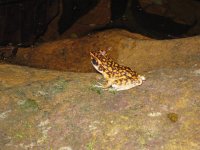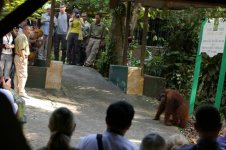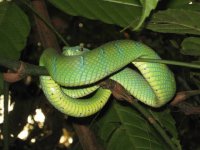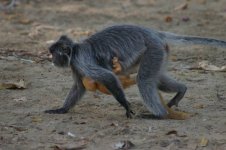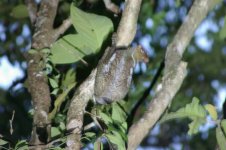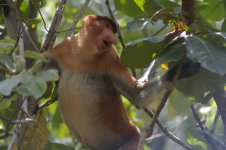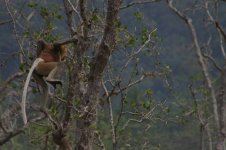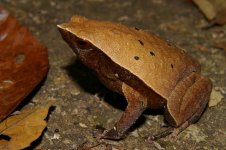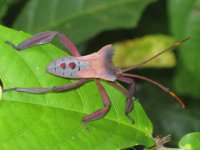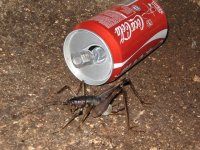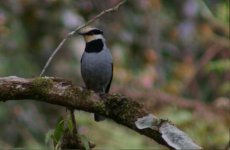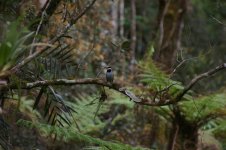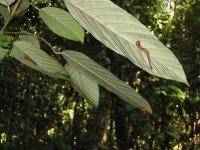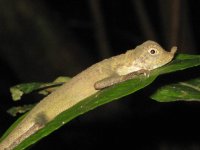Chlidonias
Well-known member
final word from Sulawesi
After flying from Palu down to Makassar in the south of Sulawesi, I basically had just one day before leaving for Kuala Lumpur. I potentially could have gone up Gunung Lompobatang which is a mountain near Makassar and the only home of the little-known Lompobatang flycatcher which went completely unseen between 1931 and 1995, but I didn’t really know how to access the site and I knew it would have been a fool’s errand looking for the flycatcher anyway. [I have since found out how to get to the flycatcher, so it had better watch out because I'll be back to find it one day!] The other site of interest to birders near Makassar is the Karaenta forest where I could see the black-ringed white-eye, a bird restricted to the south of the island. Karaenta is about ten kilometers past a little place called Bantimurung so that’s where I headed first to see if I could get a motorbike from there. But once there I learned that visiting Karaenta is now “forbidden” without police permission because of some trouble or other that had taken place there, so that was out the window. But Bantimurung is very nice, I was told: 2km of trails through good forest, a river and waterfall, lots of birds. Were there any monkeys? I asked, because the local species is one I hadn’t yet seen, the moor macaque. Lots of monkeys, I was told. I was right there at the entrance and it wasn’t like I was going to be doing anything else, so I paid the 10,000 rupiah entrance fee (less than NZ$2) and in I went. I don’t really know how to describe Bantimurung, its not really like any place I’ve seen in Indonesia before but it is very like many places I had seen in Thailand and Malaysia where anywhere there is even the tiniest waterfall it is made into a major tourist attraction, paths are laid, cave floors paved over, sculptures set up. At Bantimurung the river is actually very nice, flowing between great high limestone cliffs pockmarked with holes and caves and laden with lush vegetation, but there are all the man-made additions to make it as little like nature as possible. There was even a stereo system blaring out Limp Bizkit and System Of A Down of all things! On the wildlife side of it I came across a foot-long giant centipede which I got quite excited about. There were butterflies everywhere, both alive in the forest and by the hundred for sale in framed boxes all the way along the entrance road. Birds were notable by their almost complete absence (full list: black-naped monarch, glossy swiftlet, hair-crested drongo, blue-eared kingfisher and an unexpected grey-streaked flycatcher), as were the macaques which was a disappointment.
There are seven species of endemic macaque in Sulawesi (or eight if you split the Togian Island macaque) and potentially I could have seen six of them in the areas I would have been visiting. I saw the black crested macaque easily at Tangkoko, as I did with the Heck’s macaques at Nantu, but I completely missed the Gorontalo macaque at Bogani, the Tonkean macaque at Lore Lindu and now also the moor macaque at Bantimurung. The fault lay entirely with my poor time-keeping skills. As I said a few posts back, I had originally been planning on spending three weeks in the Lesser Sundas and five in Sulawesi, during which time I would have spent a few days at Tangkoko, a full week at Bogani, a week at Lore Lindu, a week at Morowali, and a few days each at Nantu, Faruhumpenai, and around Makassar. However the schedule got reversed along the way and I ended up with just three weeks in Sulawesi so had to toss out Faruhumpenai (where I could have seen the booted macaque) and Morowali altogether, and cut the other places right down to just a couple of days each, meaning that there was no lee-way for finding animals that proved difficult. I did find some great animals along the way - stand-outs being the bear cuscus, spectral tarsier, babirusa, anoa, and a whole slew of endemic birds - but I also missed a lot that I could have almost certainly seen if I’d had more time up my sleeve. I think a return trip to Sulawesi is definitely in order at some stage in the future.
So that’s the first two months of my trip up already! Now its Borneo time!
After flying from Palu down to Makassar in the south of Sulawesi, I basically had just one day before leaving for Kuala Lumpur. I potentially could have gone up Gunung Lompobatang which is a mountain near Makassar and the only home of the little-known Lompobatang flycatcher which went completely unseen between 1931 and 1995, but I didn’t really know how to access the site and I knew it would have been a fool’s errand looking for the flycatcher anyway. [I have since found out how to get to the flycatcher, so it had better watch out because I'll be back to find it one day!] The other site of interest to birders near Makassar is the Karaenta forest where I could see the black-ringed white-eye, a bird restricted to the south of the island. Karaenta is about ten kilometers past a little place called Bantimurung so that’s where I headed first to see if I could get a motorbike from there. But once there I learned that visiting Karaenta is now “forbidden” without police permission because of some trouble or other that had taken place there, so that was out the window. But Bantimurung is very nice, I was told: 2km of trails through good forest, a river and waterfall, lots of birds. Were there any monkeys? I asked, because the local species is one I hadn’t yet seen, the moor macaque. Lots of monkeys, I was told. I was right there at the entrance and it wasn’t like I was going to be doing anything else, so I paid the 10,000 rupiah entrance fee (less than NZ$2) and in I went. I don’t really know how to describe Bantimurung, its not really like any place I’ve seen in Indonesia before but it is very like many places I had seen in Thailand and Malaysia where anywhere there is even the tiniest waterfall it is made into a major tourist attraction, paths are laid, cave floors paved over, sculptures set up. At Bantimurung the river is actually very nice, flowing between great high limestone cliffs pockmarked with holes and caves and laden with lush vegetation, but there are all the man-made additions to make it as little like nature as possible. There was even a stereo system blaring out Limp Bizkit and System Of A Down of all things! On the wildlife side of it I came across a foot-long giant centipede which I got quite excited about. There were butterflies everywhere, both alive in the forest and by the hundred for sale in framed boxes all the way along the entrance road. Birds were notable by their almost complete absence (full list: black-naped monarch, glossy swiftlet, hair-crested drongo, blue-eared kingfisher and an unexpected grey-streaked flycatcher), as were the macaques which was a disappointment.
There are seven species of endemic macaque in Sulawesi (or eight if you split the Togian Island macaque) and potentially I could have seen six of them in the areas I would have been visiting. I saw the black crested macaque easily at Tangkoko, as I did with the Heck’s macaques at Nantu, but I completely missed the Gorontalo macaque at Bogani, the Tonkean macaque at Lore Lindu and now also the moor macaque at Bantimurung. The fault lay entirely with my poor time-keeping skills. As I said a few posts back, I had originally been planning on spending three weeks in the Lesser Sundas and five in Sulawesi, during which time I would have spent a few days at Tangkoko, a full week at Bogani, a week at Lore Lindu, a week at Morowali, and a few days each at Nantu, Faruhumpenai, and around Makassar. However the schedule got reversed along the way and I ended up with just three weeks in Sulawesi so had to toss out Faruhumpenai (where I could have seen the booted macaque) and Morowali altogether, and cut the other places right down to just a couple of days each, meaning that there was no lee-way for finding animals that proved difficult. I did find some great animals along the way - stand-outs being the bear cuscus, spectral tarsier, babirusa, anoa, and a whole slew of endemic birds - but I also missed a lot that I could have almost certainly seen if I’d had more time up my sleeve. I think a return trip to Sulawesi is definitely in order at some stage in the future.
So that’s the first two months of my trip up already! Now its Borneo time!




